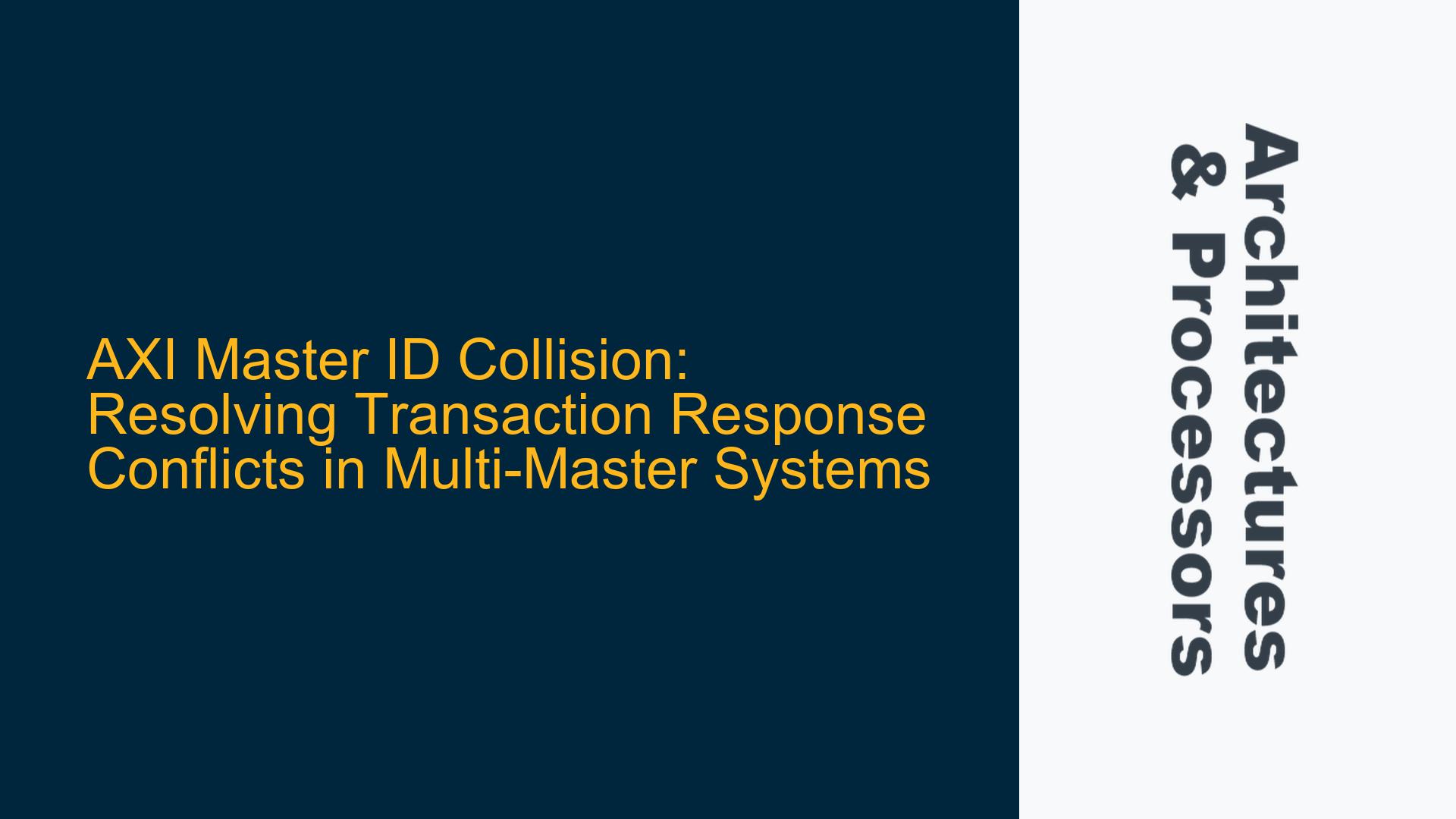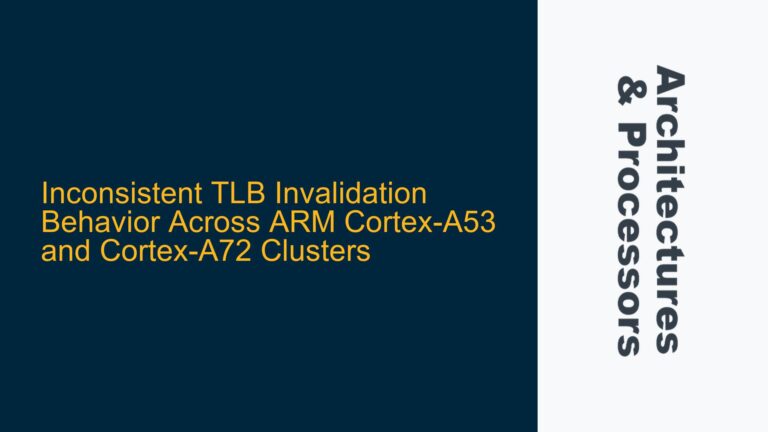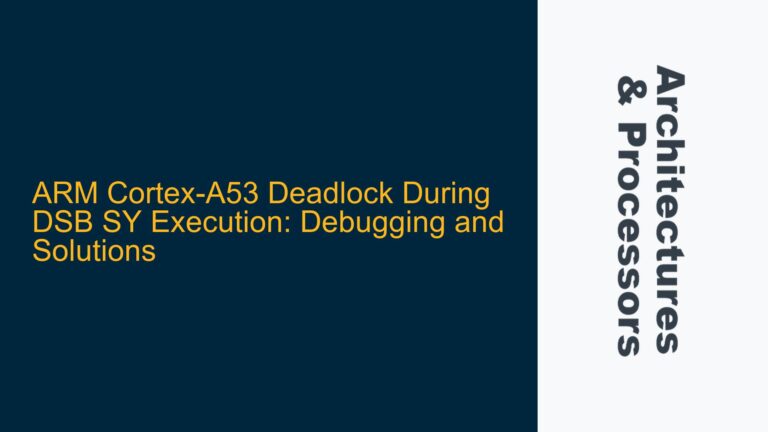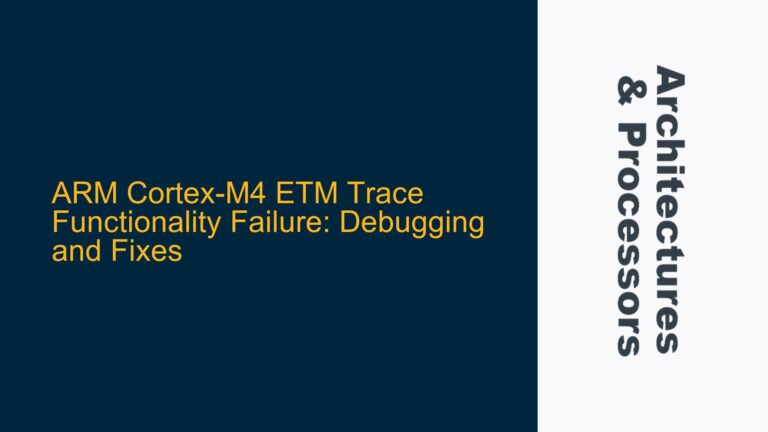AXI Transaction ID Collision in Multi-Master Systems
In advanced ARM-based systems, the Advanced eXtensible Interface (AXI) protocol is widely used for high-performance communication between masters (such as CPUs, GPUs, or DMAs) and slaves (such as memory controllers or peripherals). A critical aspect of AXI is the use of transaction IDs to manage out-of-order transactions and ensure correct responses are routed back to the originating master. However, in multi-master systems, a significant issue arises when two or more masters use the same transaction ID for concurrent transactions. This scenario, known as an AXI transaction ID collision, can lead to incorrect responses being routed to the wrong master, resulting in data corruption, system instability, or undefined behavior.
The AXI protocol relies on unique transaction IDs to differentiate between multiple outstanding transactions. Each master assigns an ID to its transactions, and the interconnect is responsible for ensuring that responses are correctly routed back to the originating master. When two masters use the same ID, the interconnect may fail to distinguish between the transactions, leading to response routing errors. This issue is particularly prevalent in systems with identical CPUs or masters that use fixed ID encodings.
The core of the problem lies in the interconnect’s ability to handle ID uniqueness. Without proper mechanisms to differentiate between identical IDs from different masters, the system cannot guarantee correct operation. This issue is exacerbated in large-scale systems with multiple masters and complex interconnects, where ID management becomes increasingly challenging.
Design Flaws and Interconnect Limitations
The root cause of AXI transaction ID collisions can be traced to two primary factors: design flaws in the master ID assignment strategy and limitations in the AXI interconnect’s ID management capabilities.
In many systems, masters are designed with fixed or limited ID assignment schemes. For example, a DMA controller might use a small set of predefined IDs for its transactions. If two such masters are present in the system, they may independently assign the same IDs to their transactions, leading to collisions. This is especially common in systems with identical CPUs or homogeneous processing elements, where the masters are likely to use similar ID assignment logic.
The AXI interconnect plays a crucial role in managing transaction IDs. A well-designed interconnect should be capable of "uniquifying" transaction IDs by adding extra bits to differentiate between masters. However, not all interconnects are created equal. Some may lack the necessary logic to handle ID collisions, while others may have limited configurability in terms of ID width. In such cases, the interconnect may fail to correctly route responses, leading to system errors.
Another contributing factor is the slave’s ID width configuration. Slaves must be capable of handling the expanded ID width introduced by the interconnect. If the slave’s ID width is insufficient, it may truncate or misinterpret the unique IDs, leading to incorrect response routing. This highlights the importance of ensuring that all components in the AXI system are properly configured to handle the required ID width.
Implementing Unique Transaction IDs and Interconnect Solutions
To resolve AXI transaction ID collisions, a combination of hardware and software solutions can be employed. These solutions focus on ensuring unique transaction IDs across all masters and enhancing the interconnect’s ID management capabilities.
The first step is to implement a unique ID assignment strategy at the master level. This can be achieved by modifying the master’s ID generation logic to include a master-specific prefix or offset. For example, in a system with two CPUs, each CPU could be assigned a unique base ID, and all transactions from that CPU would use IDs within its assigned range. This approach ensures that even if the CPUs generate the same internal IDs, the final transaction IDs will be unique across the system.
The AXI interconnect must be configured to handle the expanded ID width and correctly route responses based on the unique IDs. Modern AXI interconnects often include features such as ID remapping and ID width extension, which can be used to ensure unique IDs across all masters. The interconnect should be programmed to add the necessary bits to each transaction ID, effectively creating a unique identifier for each master.
Slaves must also be configured to support the expanded ID width. This involves setting the slave’s ID width configuration register to match the interconnect’s ID width. Failure to do so can result in ID truncation or misinterpretation, leading to incorrect response routing. It is essential to verify that all slaves in the system are capable of handling the required ID width and are properly configured.
In addition to hardware solutions, software can play a role in managing transaction IDs. For example, the operating system or firmware can be responsible for assigning unique IDs to each master during system initialization. This approach is particularly useful in systems with dynamic master configurations, where the number of masters and their IDs may change during operation.
To summarize, resolving AXI transaction ID collisions requires a comprehensive approach that addresses both the master and interconnect levels. By implementing unique ID assignment strategies, configuring the interconnect for ID width extension, and ensuring proper slave configuration, system designers can eliminate ID collisions and ensure correct response routing in multi-master AXI systems.
Detailed Configuration Steps
-
Master ID Assignment Strategy: Modify the master’s ID generation logic to include a unique prefix or offset. For example, assign Master 1 a base ID of 0x0000 and Master 2 a base ID of 0x1000. This ensures that all transactions from Master 1 will have IDs in the range 0x0000-0x0FFF, while transactions from Master 2 will have IDs in the range 0x1000-0x1FFF.
-
Interconnect Configuration: Program the AXI interconnect to add the necessary bits to each transaction ID. For example, if the interconnect supports ID width extension, configure it to add a 4-bit master identifier to each transaction ID. This will create a unique ID for each master, even if they generate the same internal IDs.
-
Slave ID Width Configuration: Set the slave’s ID width configuration register to match the interconnect’s ID width. For example, if the interconnect adds 4 bits to the transaction ID, ensure that the slave is configured to handle an ID width of at least 12 bits (assuming an original ID width of 8 bits).
-
System Initialization: During system initialization, use software to assign unique IDs to each master. This can be done by writing to the master’s ID configuration registers or by using a centralized ID management module.
-
Verification and Testing: After implementing the above steps, thoroughly test the system to ensure that all transactions are correctly routed and that no ID collisions occur. This can be done using simulation tools, hardware emulation, or on-target testing.
By following these steps, system designers can effectively resolve AXI transaction ID collisions and ensure reliable operation in multi-master systems. Proper ID management is essential for maintaining data integrity and system stability, and the solutions outlined above provide a robust framework for achieving this goal.






